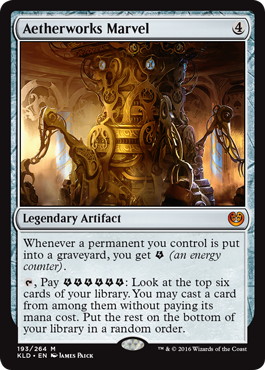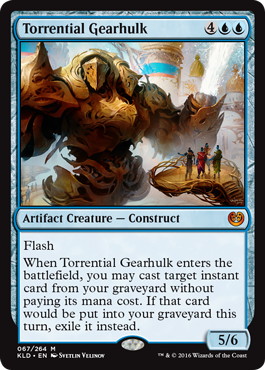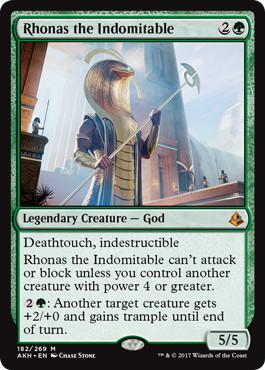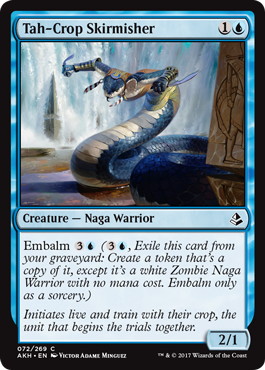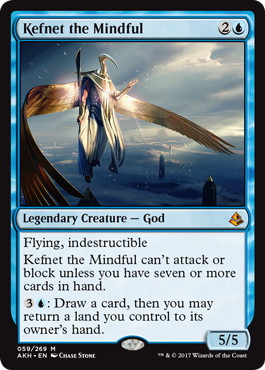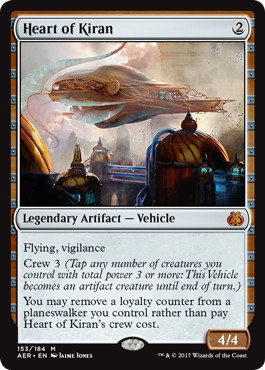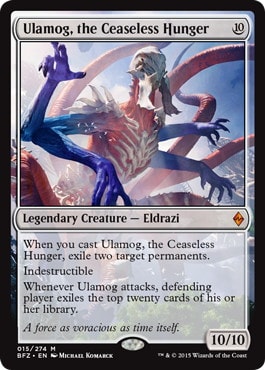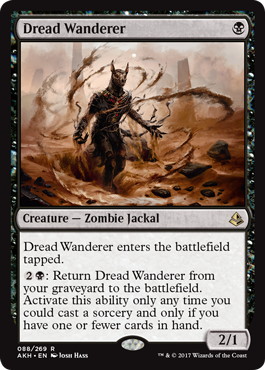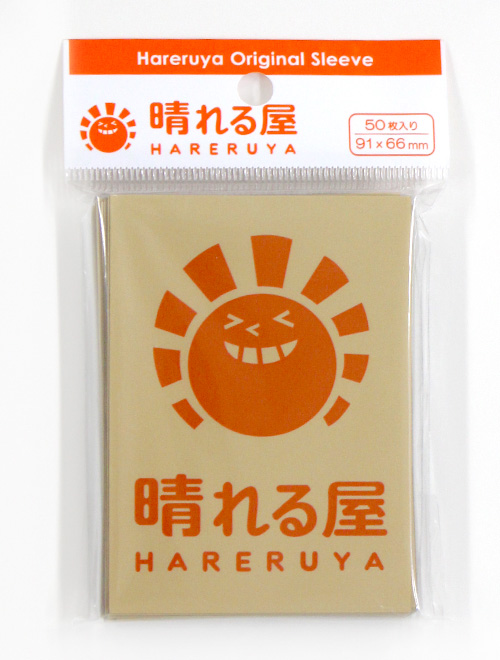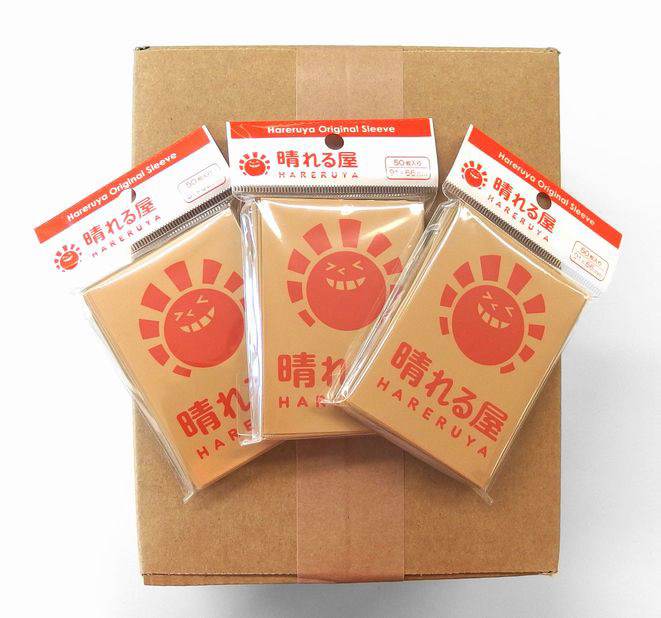Introduction
Two weeks ago I was in Nashville, battling to get my third Pro Tour top8. And boy, was it looking good: I was sitting pretty at the end of day one, clinching first place with 8 wins and no losses. Nevertheless, I only managed an unexciting 10-6 finish: in other words, I scored a pathetic 2 and 6 during day2.
We are one hour away from the start of Day 2 at #PTAKH on https://t.co/glt0Vc0v0l! The 8-0 @Gatormage and @ElPruno_Dagen lead the pack! pic.twitter.com/FGJ00kMmbV
— Magic Pro Tour (@magicprotour) 2017年5月13日
The final result is fairly uninteresting, but the journey was, so I decided to take it as an opportunity to try and explain how things can go south overnight, and maybe how to avoid it.
The build-up: PT testing
This time, I was lucky enough to reconcile the best two crews I ever tested with: Eureka, and Renaissance. A bunch of Eureka old-timers (Magnus Lantto, Oliver Polak-Rottman and Immanuel Gerschenson) agreed to join forces with my French mates (Remi Fortier and Thierry Ramboa), and we all brought along several solid players we knew would pull their weight, including eventual top8 contender Marc Tobiasch.
The online release happened much earlier than it used to (and much later than it now will!), which is an interesting gamechanger when it comes to Pro Tour Preparation. Not only does it make it easier to start testing before you meet in real life, it also lets you get a lot more drafting in. On the other hand, so many games are played on MTGO that the metagame pretty much defines itself, and leaves very little room for innovation.
For that reason, “accepting defeat” (in PV’s words) and just jamming a well-tuned version of a popular deck will probably (and sadly) be the best course of action most of the time. For instance, at this PT, the only decks I had never considered in testing that saw play were white/blue flash, that showed a 40% conversion rate, and the New Perspectives combo deck that scored 43%.
Keeping in mind that the average conversion rate was 63%, I would say that people who tried to outsmart the sheer volume of data that MTGO is able to crunch failed hard.
I will not go too deep in our testing, but we had most things figured out: our metagame had Mardu and Marvel as tier 1, Zombies and U/R control as tier 2, and BG energy as tier 3. We completely dismissed BG Delirium as it was so obvious that its worst match-up, Marvel, was going to be all over the place.
Our team was split between those who liked Marvel for being the best deck with only U/R as a bad match-up, and those who believed that B/G energy was a superior choice because it had the best match-up against Mardu and would prey on U/R, even though it was slightly behind against both Marvel and Zombies.
I registered the following BG Energy decklist, which started as a “combo” between 《Bristling Hydra》 and 《Rhonas the Indomitable》, the Indomitable (which trumped Mardu’s Planeswalker plan, making it a very good match-up) and evolved into a more standard, aggressive version of the deck.
The few innovations we ran included the main deck Hydras to fight Mardu alongside 《Rhonas the Indomitable》, and the three flying vehicles that we realized where actually very strong against both Zombies and Marvel.
|
6 《Forest》 4 《Swamp》 4 《Aether Hub》 4 《Blooming Marsh》 3 《Hissing Quagmire》 -Lands (21)- 2 《Walking Ballista》 4 《Greenbelt Rampager》 4 《Glint-Sleeve Siphoner》 4 《Longtusk Cub》 4 《Winding Constrictor》 2 《Rishkar, Peema Renegade》 1 《Rhonas the Indomitable》 3 《Bristling Hydra》 2 《Verdurous Gearhulk》 -Creature (26)- |
4 《Attune with Aether》 3 《Fatal Push》 3 《Grasp of Darkness》 1 《Dissenter's Deliverance》 2 《Aethersphere Harvester》 -Spells (13)- |
3 《Tireless Tracker》 2 《Gonti, Lord of Luxury》 2 《Dispossess》 2 《Yahenni's Expertise》 2 《Liliana, the Last Hope》 1 《Rhonas the Indomitable》 1 《Dissenter's Deliverance》 1 《Never // Return》 1 《Skysovereign, Consul Flagship》 -Sidebord (15)- |

Mistake number one: not reading my pod
I am not going to bore you with yet another round-by-round report: instead, I decided to structure this article around the main errors I made that lead me to that disappointing result.
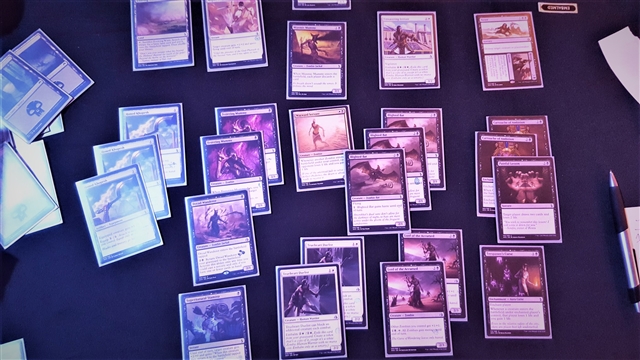
I won my first draft with an average black-white zombies deck. By average, I mean that the power level was fairly low (I played three 《Honed Khopesh》 and a 《Trespasser's Curse》…), and I lacked good finishers (my curve ended at three mana). On the other hand, it was solid, with a good curve (did I mention my curve ended at three mana?) and tons of embalm creatures.
So how did it win? Well, my pod was really weak, with Thierry Ramboa as the only player I recognized, and almost every drafter stuck with the “obvious” strategy of drafting an aggressive deck, because this is the obvious thing to do in Amonkhet.
Problem is, when everyone tries to do that, they all kind of fail for lack of two drops, and my deck was amazing at punishing mediocre aggressive decks: I just had to trade my early drops, embalm them, and push through with a 《Honed Khopesh》…and I could do that with very high consistency. Also, when things got a bit tough, my opponents let me a little more openings than they should have to sneak in a win.
Day two, I did the exact same thing: draft a solid white/blue deck with perfect curve, no strong finishers and a lot of early drops with embalm, and punish aggressive decks even harder. I went very far towards this plan, since I even picked a 《Tah-Crop Skirmisher》 over a 《Kefnet the Mindful》 in pack three.
Problem is, that pod was one of the toughest one I ever drafted at, and people whose seats did not allow them to draft aggressive decks were good enough to see that and do something else.
I ended playing against Fenell with a blue-green “ramp” deck that never traded with my embalm guys and demolished me with 《Glyph Keeper》 , Efro who got game three on the back of two very no-low-curve 《Greater Sandwurm》 that my two-drops could not block, and got quite lucky to avoid the 0-3 by being paired against Shota who at least had an aggressive deck.
So, takeaway number one: adapt your strategy with your pod. For the record, had I drawn a 《Kefnet the Mindful》 every time I drew a 《Tah-Crop Skirmisher》, I would very probably have gone 3-0, so variance was definitely not to blame here.
Mistake number two: Picking a deck for day 1
All in all, I feel that my list was not a great pick for the tournament. That happens, but here, I feel like I am guilty of negligence, because I had all the information I needed to pick correctly: we have figured out that the most played decks would be Marvel and Mardu, and we had correctly realized that Zombies and Marvel would have good results against Mardu.
With that in mind, I still went with the deck that I thought had the best Mardu match-up, even though I knew it was not great against the two decks that I felt would perform well in day 1.
That paid out really well day 1: I crushed two Mardu decks (going 3-1 overall in the MU over the whole tournament), and played against non-Chandra version of Marvel that are fine match-ups (you are heavily unfavored against the Chandra version that Genesis ran, but slightly ahead against the other versions, especially the spell-heavy one), winning all five rounds.
But sure enough, Mardu was less represented day 2 and had given space to a lot of Zombies decks. In other words, because of how decks converted into day 2, I picked a deck that did well against the metagame day 1, and poorly against the day 2 decks.
Not that Zombies is an unwinnable match-up by any mean, and all three matches I lost against it where very close and could easily have gone my way, either due to me missing a line of play or running kind of bad (I think I ran a little under average day 2 for the constructed portion), but BG Energy is definitely not a deck I would actively want to play against Zombies.
So, takeaway number two: when you pick your deck, keep in mind that you should take into account two different metagames. The first one is day 1 metagame, and will mostly resemble MTGO, but the second one you have to compute based on how you feel each deck stack against the others. Making day2 is obviously crucial, but doing well on day2 should also be on your mind.
Note that this also applies to GP players. For example, at the moment, if I was to enter a standard GP, I would heavily consider playing UR control despite its weak Mardu match-up, because I would anticipate a very favourable day two metagame for my deck.
That is it for today, I hope you guys will be able to learn from my mistakes. I will have to try to, cause you know, I do so many…
Until next time.
Pierre Dagen
Recommended Items
Share in Twitter
Share in Facebook



